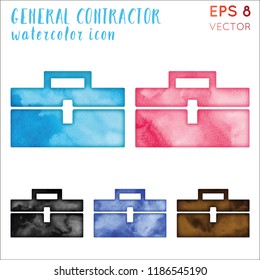Discover Just How Seasonal Influences Can Influence The Performance Of Business Exterior Paint And Figure Out The Most Positive Times To Make Sure Resilient Outcomes For Your Job
Discover Just How Seasonal Influences Can Influence The Performance Of Business Exterior Paint And Figure Out The Most Positive Times To Make Sure Resilient Outcomes For Your Job
Blog Article
Content Writer-Doherty Whalen
When you're planning a commercial exterior painting project, seasonal variables can make or damage your results. You'll want to think about how temperature and moisture effect paint application and drying times. Picking the ideal period can ensure your paint adheres effectively and lasts longer. But which seasons are truly the best for this kind of work? Allow's discover the key elements that can impact your task's success.
The Effect of Temperature on Paint Application
When you're intending an industrial exterior painting job, the temperature level can substantially impact just how well the paint adheres and dries.
Preferably, home painting service intend to paint when temperature levels range in between 50 ° F and 85 ° F. If it's also chilly, the paint might not cure effectively, bring about problems like peeling off or fracturing.
On the flip side, if it's too warm, the paint can dry out as well quickly, protecting against correct adhesion and resulting in an uneven coating.
You must additionally consider the moment of day; morning or late afternoon supplies cooler temperature levels, which can be more desirable.
Always inspect Read the Full Post for the specific paint you're utilizing, as they frequently supply guidance on the optimal temperature range for optimal outcomes.
Humidity and Its Effect on Drying Times
Temperature level isn't the only ecological factor that affects your commercial external painting task; humidity plays a substantial role as well. High moisture degrees can reduce drying out times drastically, affecting the overall high quality of your paint task.
When the air is saturated with wetness, the paint takes longer to treat, which can cause issues like inadequate adhesion and a greater threat of mold growth. If you're repainting on a specifically humid day, be gotten ready for prolonged delay times in between coats.
It's crucial to check local weather and plan appropriately. Preferably, aim for moisture levels in between 40% and 70% for ideal drying.
Keeping these factors in mind guarantees your job remains on track and delivers a long lasting coating.
Best Seasons for Commercial Exterior Painting Projects
What's the best time of year for your business external paint projects?
Springtime and very early loss are normally your best bets. During these periods, temperatures are mild, and humidity levels are commonly lower, creating optimal conditions for paint application and drying out.
Prevent summer's intense heat, which can cause paint to dry too swiftly, resulting in poor bond and finish. In a similar way, winter season's chilly temperature levels can impede correct drying out and healing, taking the chance of the longevity of your paint task.
Aim for days with temperatures in between 50 ° F and 85 ° F for optimal results. Bear in mind to examine the regional weather prediction for rainfall, as wet conditions can destroy your job.
Preparation around these factors ensures your painting task runs efficiently and lasts much longer.
Conclusion
In conclusion, planning your industrial exterior paint projects around seasonal factors to consider can make a substantial difference in the outcome. By organizing job throughout the excellent temperature levels and humidity degrees, you'll make sure much better bond and drying out times. Keep in mind to keep an eye on neighborhood weather prediction and select the correct time of year-- spring and early fall are your best choices. Taking these steps will certainly assist you attain a long lasting and expert finish that lasts.
